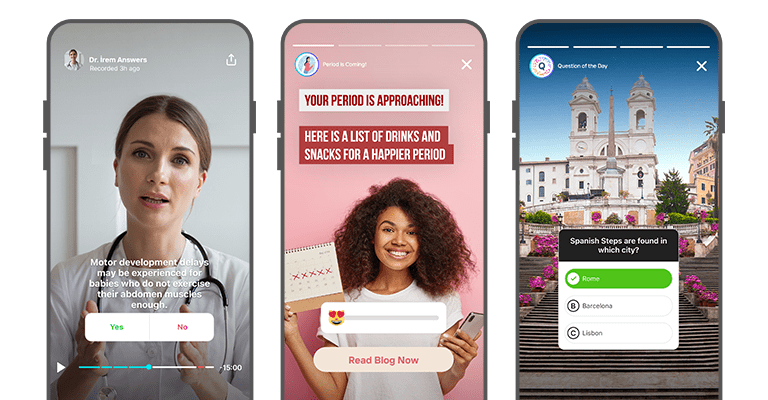In today’s digital age, social media has become an integral part of our lives. It offers endless opportunities for individuals and businesses to connect, engage, and share information with a vast audience. However, with millions of posts being shared every second, it can be challenging to stand out from the crowd and capture the attention of your target audience. This is where effective design comes into play.
Designing compelling and engaging content for social media is crucial for capturing your audience’s interest, driving user engagement, and ultimately achieving your marketing goals. Each social media platform has its unique characteristics, user behaviors, and design requirements.
Understanding these nuances and tailoring your content accordingly is key to maximizing its impact. In this article, we will explore the principles and strategies of designing for social media and provide practical tips for creating captivating content across various platforms.
Know Your Audience

Before diving into the design process, it is essential to have a deep understanding of your target audience. Who are they? What are their preferences, interests, and pain points? Conduct thorough research and develop detailed buyer personas to guide your content creation process.
This knowledge will help you design visuals and messages that resonate with your audience on a personal level, increasing the chances of engagement.
Visual Consistency and Branding

Consistency is key when it comes to building brand recognition and establishing a strong online presence. Define a cohesive visual style for your brand, including color palettes, typography, and graphic elements.
Apply these consistently across all your social media platforms to create a seamless brand experience. Incorporate your logo and brand elements into your designs to enhance recognition and reinforce your brand identity.
Tailor Content for Each Platform

Different social media platforms have varying content formats and design requirements. Take the time to understand the specific design specifications of each platform, such as image sizes, aspect ratios, and recommended resolutions. This ensures that your content appears optimized and professional on each platform, enhancing user experience and engagement.
- Instagram: Known for its visual-centric nature, Instagram favors high-quality imagery and eye-catching visuals. Utilize vibrant colors, compelling photography, and creative compositions to capture attention in the Instagram feed. Experiment with carousel posts, stories, and video content to keep your audience engaged and entertained.
- Facebook: With a diverse user base, Facebook accommodates various types of content. Ensure your images and videos are optimized for the platform and design attention-grabbing thumbnails to encourage clicks. Incorporate clear and concise text overlays to communicate your message effectively, as many Facebook users browse with sound muted.
- Twitter: Due to its character limit, Twitter relies heavily on concise and impactful content. Utilize attention-grabbing visuals, including infographics, GIFs, and videos, to accompany your tweets. Optimize images for mobile viewing, as a significant portion of Twitter users access the platform via smartphones.
- LinkedIn: As a professional networking platform, LinkedIn focuses on informative and educational content. Use professional images, well-designed graphics, and visually appealing slide decks to convey your message effectively. Incorporate your brand’s color scheme to maintain consistency and establish credibility.
Engage with Visual Hierarchy

Design your social media content with a clear visual hierarchy to guide viewers’ attention and communicate your message effectively. Utilize size, color, and placement to highlight important elements such as headlines, call-to-action buttons, or key messages.
Break down information into digestible chunks and use bullet points, icons, or visuals to make it easily scannable and shareable.
Experiment with Interactive Content

Interactive content is highly engaging and can significantly boost user participation and brand awareness. Incorporate interactive elements such as polls, quizzes, contests, or interactive infographics to encourage user interaction and increase social media shares.
Interactive content is a powerful tool for capturing and maintaining the attention of your social media audience. With polls, you can gather valuable insights, spark discussions, and make your audience feel involved. Quizzes not only entertain but also educate and provide a personalized experience.
Contests generate excitement, encouraging users to participate and share your content. Interactive infographics allow users to explore information at their own pace, making complex data more digestible and shareable.
Use Strong Captions and Copy
While design is important, don’t neglect the power of compelling captions and copy. Craft attention-grabbing headlines, concise yet informative descriptions, and persuasive calls-to-action.
Incorporate relevant hashtags to expand your reach and join relevant conversations. Experiment with different tones, styles, and formats to find the voice that resonates with your audience and drives engagement.
Optimize for Mobile

The majority of social media users access platforms through mobile devices. Ensure your designs are mobile-friendly and optimized for smaller screens. Keep text legible, avoid overcrowding visuals, and use high-resolution images that load quickly. Test your content across different mobile devices and screen sizes to ensure a seamless user experience.
With the rise of mobile usage, it is crucial to prioritize mobile optimization for your social media designs. Opt for responsive layouts that adapt to different screen sizes, ensuring a seamless experience across devices.
Use legible fonts and avoid small text that may be difficult to read on smaller screens. Streamline your visuals by avoiding overcrowding and maintaining a clean and uncluttered design. Compress images to optimize loading speed without compromising quality.
Analyze and Iterate

Social media platforms offer valuable analytics and insights into the performance of your content. Monitor key metrics such as engagement rate, reach, click-through rate, and conversions.
Analyze this data regularly to identify trends, understand what resonates with your audience, and optimize your future content accordingly. Experiment with different designs, formats, and strategies to continually improve your social media presence.
Conclusion
In conclusion, designing for social media requires a deep understanding of your audience, a consistent brand identity, and tailoring your content to each platform’s specific requirements.
By applying these principles and implementing the practical tips mentioned above, you can create captivating and engaging content that drives user interaction, increases brand visibility, and helps you achieve your marketing goals.
Remember to stay creative, stay relevant, and stay connected with your audience through well-crafted designs that make a lasting impact on social media.



